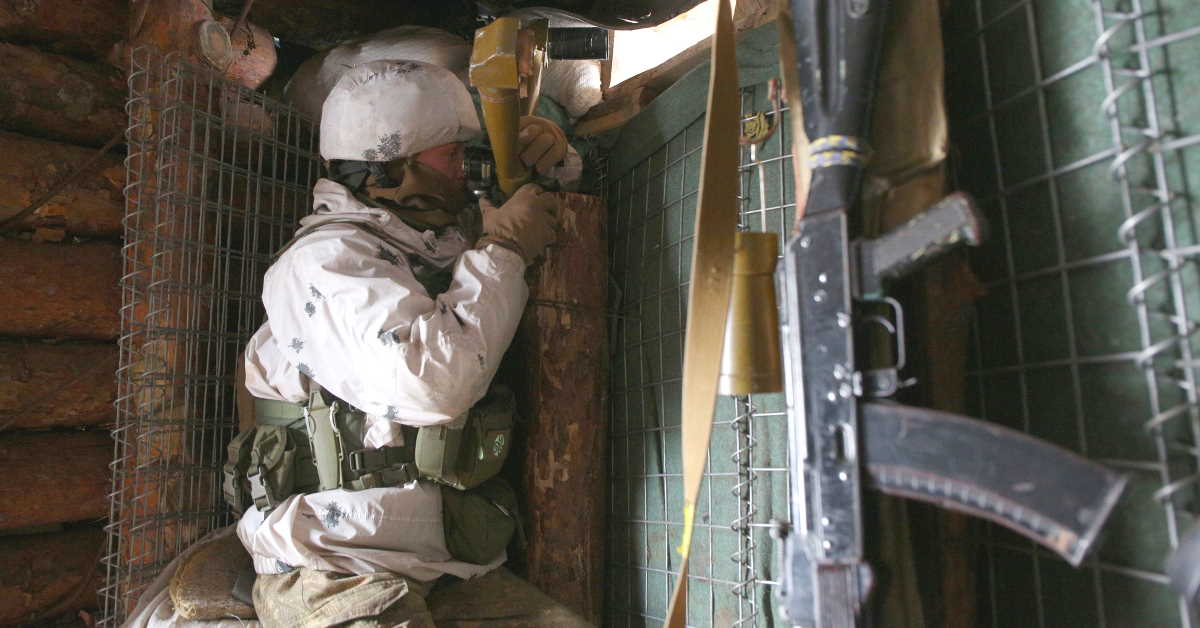Tensions between Ukraine and Russia, which has massed troops along their border, has drawn Washington and Moscow into a Cold War-style stand-off.
Here is a timeline of the spiralling situation.
Troop Movements
On 10 November, 2021 NATO warns Moscow about taking "aggressive action" after Washington reports unusual troops movements near the Ukrainian border.
Russian President Vladimir Putin accuses the West of "supplying modern weapons to Kyiv" and staging provocative military exercises.
Winter Offensive?
On 28 November, Ukraine says Russia is massing nearly 92,000 troops for an offensive at the end of January or early February.
Moscow denies this outright and three days later accuses Kyiv of a military build-up of its own, demanding "legal guarantees" that it will never join NATO.
Virtual Summit
On 7 December, US President Joe Biden threatens Putin with "strong economic and other measures" if he invades Ukraine.
'Massive Consequences'
On 16 December, the EU and NATO warn of "massive strategic consequences if there was a further attack on Ukraine's territorial integrity".
The next day Moscow puts forward proposals to limit US influence on former Soviet states.
Talks To Ease Tensions
On 28 December, Washington and Moscow announce European security talks.
On 2 January, 2022 Biden assures Ukraine that Washington and its allies would "respond decisively" if Russia moves to invade.
'Real' Threat
Three days later EU foreign policy chief Josep Borrell pledges the bloc's full support for Ukraine.
On 8 January, a senior White House official says the US is ready to discuss with Russia the two countries' missile systems and military exercises.
Week Of Diplomacy
On 10 January, top US and Russian officials begin a week of tense talks in Geneva.
Massive Cyberattack
A cyberattack on 14 January briefly knocks out key government websites in Ukraine.
Kyiv says it has uncovered clues Russia could have been behind it.
Build-Up In Belarus
On 17 January, Russian troops begin arriving in ex-Soviet Belarus for snap military drills, which Moscow says are aimed at "thwarting external aggression".
US officials say the size of the force is "beyond what we'd expect of a normal exercise."
Two days later Washington announces an extra US$200 million in security aid to Kyiv.
Biden Fears 'Invasion'
On 20 January, Biden says any incursion of Russian troops is "an invasion" after appearing to suggest a "minor" attack on Ukraine could invite a lesser response.
High-Wire Diplomacy
US Secretary of State Antony Blinken says he asked Russian counterpart Sergei Lavrov at a meeting on Friday to prove Russia is not planning to invade Ukraine.
Washington promises a written response to Russian security demands the following week.
Baltic States Move In
The same day ex-Soviet NATO members Estonia, Latvia and Lithuania – after the green-light from Washington – say they will send anti-tank and anti-aircraft missiles to allow Ukraine to defend itself.
Russia vows "the most serious consequences" if Washington keeps ignoring its "legitimate security concerns" over Ukraine.
Russia also demands the withdrawal of NATO troops from Romania and Bulgaria.
Invasion Fears Grow
On Saturday Britain alleges that Moscow is "looking to install a pro-Russian leader in Kyiv" and planning for an attack.
Moscow dismisses the claims as "disinformation".
The next day Ukraine vows to counter Russian influence over its political and economic life.
Travel Warnings
In the evening Washington orders the families of its diplomats in Kyiv to leave the country "due to the continued threat" of a Russian invasion, also warning against travel to Russia.
Britain withdraws some staff and their relatives from its embassy in Ukraine on Monday, while France advises nationals against non-essential travel there.
NATO On Standby
NATO allies put forces on standby and send ships and fighter jets to bolster Europe's eastern defences.
Biden schedules a video call with European allies later Monday to discuss a common response.
Global stock markets fall, spooked by fears of war.
